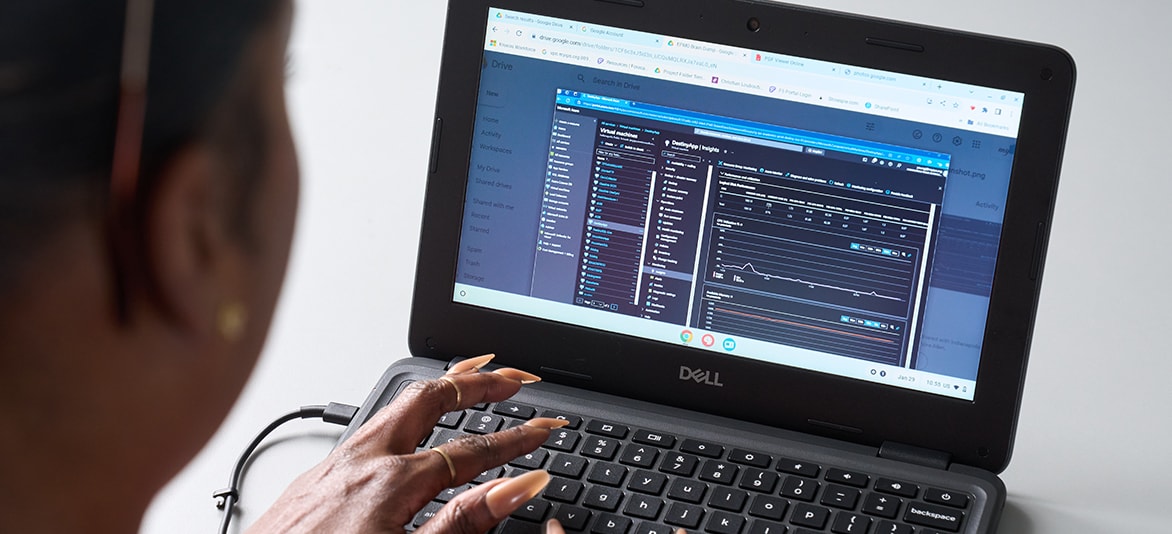March 28, 2025
How Indianapolis Public Schools Built a Stronger Foundation in the Cloud
With this modern infrastructure, the district enjoys better flexibility, sustainability and resilience.

“It’s a solution that allows us to reimagine our classrooms and also the way our teachers teach.”
— Chenzira Allen, Director of Digital Strategy and Transformation, Indianapolis Public Schools
IPS Finds Flexibility and Security in the Cloud
CDW kicked off the work in 2023 with a discovery and assessment phase to determine exactly which applications could be migrated and which would have to stay onsite. CDW evaluated the apps for their interdependency to ensure they could move without affecting other workloads, examined security and backup requirements, and checked application vendor support to confirm cloud compatibility.
CDW’s experts also developed several financial models showing how the district’s various options would affect costs. “The idea was to model several migration scenarios, from no cloud adoption to full cloud adoption, giving them high and low watermark numbers they could present to the board,” Wonson explains.
District leaders reviewed the CDW analysis and agreed that moving out of the existing data center — and migrating as much to cloud as possible — was the way to go. They decided they would finance the project using remaining Elementary and Secondary School Emergency Relief funds, and that CDW would conduct the migration over the summer of 2024.
Allen remembers the excitement she felt once it was certain that change was on the way. She knew what the cloud had to offer — both for the district’s schools and for her team.

“With all of the apps we’re now using in education, and the computing power and storage that we need, it’s a solution that allows us to reimagine our classrooms and also the way our teachers teach,” she says. Cloud migration would immediately minimize the district’s need for expensive infrastructure. Even better, it would give it the flexibility to adapt to technologies like artificial intelligence, which would require substantial IT resources.
That city facility, still there today, is no longer home to the old ISP servers. Instead, 95% of the district’s applications are hosted in Microsoft Azure, while the remainder live in a Scale Computing cluster housed on a rack in the high school’s data closet.
CDW, led by Wonson, structured the migration in waves. The process was streamlined through automation tools, and it included the simultaneous technical implementation of firewalls and other security features.
“When you’re in the cloud, the cloud service provider handles security of the data center infrastructure, but it’s up to the school to protect its virtual machines, applications and databases,” Wonson explains. This shared security model sometimes takes districts by surprise, he adds. “We always spend time focused on those details so they’re aware of their responsibilities and have the right security tools and practices in place.”
Equipped for a Sustainable Present and Future
Today, IPS could serve as a model for other K–12 districts with cloud ambitions. The organization successfully completed its migration before students returned from summer break, and it is now seeing the benefits of its technological evolution.
The district has become “more agile,” Allen notes. Teachers can more easily access instructional resources that allow them to personalize student learning with a few clicks on any network-connected device.
IPS has also reaped rewards on the IT management front. The district’s technologists no longer worry about tinkering with a decaying fleet of vulnerable servers. Instead, they get to focus on people-centric things, such as teacher and classroom support. If an instructor is interested in trying a new app, it’s easy for the team to onboard the required resources. And thanks to the district’s cloud backups, the risk of data being lost is greatly reduced.
In fact, Allen says, in measures of sustainability and resiliency, “we’re much better off now that we’re in the cloud than we ever were when our data center was on-premises.” The district, she adds, now has what it needs to deliver on the promise of rebuilding stronger.
“It’s a great time to be a part of IPS,” Allen says. “You can feel the mobility and the energy — the sense that we’re really moving forward.”
